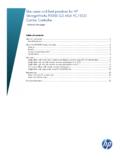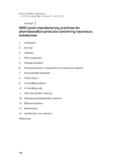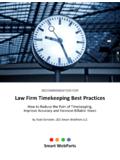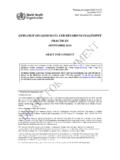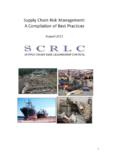Transcription of Top 10 Evidence-Based, Best Practices for …
1 best Practices for PowerPoint April 2012 1 Transformative Dialogues: Teaching & Learning Journal Volume 5 Issue 3 April 2012 Top 10 evidence - based , best Practices for PowerPoint in the Classroom Ronald A. Berk, PhD, Professor Emeritus The Johns Hopkins University Author's Contact Information Ronald A. Berk 10971 Swansfield Rd. Columbia, MD 21044 410-940-7118 email: Abstract: PowerPoint presentations in academia have a reputation for being less than engaging in this era of learner-centered teaching. The Net Generation of students also presents a formidable challenge to using PowerPoint . The problem is that the traditional PowerPoint in the classroom resembles static electronic overheads that tend to decrease learning and retention of the content presented.
2 With more than 80 studies on the topic and a solid foundation of cognitive psychology, learning theory, and physiological research and experience with rich media, current Practices need to be aligned with the research evidence . This article synthesizes the PowerPoint literature and translates the research findings into a state-of-the-art, concise top-10 list of evidence - based , best Practices for teaching. The first five are basic design options (background, font, color, headings, text) and the last five pertain to engagement and multimedia (images, movement, music, video). Hopefully, those Practices will propel faculty to upgrade their PowerPoint presentations consistent with the evidence . Key Words: PowerPoint, PowerPoint research, PowerPoint teaching, multimedia in teaching, PowerPoint engagement, death by PowerPoint, PowerPoint best Practices .
3 best Practices for PowerPoint April 2012 2 Transformative Dialogues: Teaching & Learning Journal Volume 5 Issue 3 April 2012 Professor, We Have a Problem! Death by PowerPoint is an international epidemic with too much text and boring graphics topping the list of frustrating and uninspired features. That was the major conclusion from a June 2011 survey of the adult population ( error) by IBOPE Zogby International (Allen, 2011). Can you relate to those findings? PowerPoint ranks as one of the most dreaded presentation platforms, with respondents claiming they would rather forego sex tonight (24%), do their taxes (21%), go to the dentist (20%), or work on Saturday (18%) than have a close encounter of the PowerPoint kind.
4 College students have also expressed comparable negative reactions (Mann & Robinson, 2009) towards traditional PowerPoint presentations in their classes. So where does the revolution begin to change this reputation of PowerPoint ? Let s start in the classroom. Ingredients in a Lethal Dose of PowerPoint based on the preceding survey results and more than 80 research studies (Berk, 2011b), what exactly are the active ingredients in a lethal dose of PowerPoint ? There seem to be three primary elements: 1. Dead words on the screen (white background and black font with lots of text and bullets) 2. Read most or all dead words to your students 3. Students are Net Geners (17 30 years old) who are easily bored and impatient What s Wrong with the Ingredients?
5 Elements 1 and 2 violate the principles of cognitive load theory. The research has shown that learning increases by decreasing extraneous information (or overload that exceeds one s cognitive capacity) on each slide (Kalyuga, 2011; Kirschner, Kester, & Corbalan, 2011; Mayer, 2009). Too much text is an example of that overload. The redundancy principle indicates that reading text verbatim on a slide off of the screen decreases learning and retention (Mayer & Johnson, 2008). When those first two elements are mixed together with a few of the characteristics of your Net Gener students (Berk, 2009), you have a formula for potential disaster in your classroom. How would you answer the following question? How will your students most likely respond in class to a PowerPoint with those elements?
6 A. Walk out or not come to class B. Text, IM, surf, or do other work C. Fall asleep D. Get angry and frustrated E. Throw frozen vegetables at you and the screen F. All of the above best Practices for PowerPoint April 2012 3 Transformative Dialogues: Teaching & Learning Journal Volume 5 Issue 3 April 2012 A Suggested Antidote This traditional use of PowerPoint , resembling static electronic transparencies with lecture notes on the screen, is antithetical to the Practices of learner-centered teaching? I know what you re thinking: We ve come so far in the transition from teacher-centered to learner-centered environments over the past decade that PowerPoint just doesn t seem to fit. WROOONG! So, what is the antidote?
7 I m glad you asked. After carefully reviewing all of the research related to basic features and multimedia in PowerPoint (Berk, 2011b), specific applications of the findings (Berk, 2012), strategies to integrate engagement activities throughout a PowerPoint presentation (Berk, 2011a), and the recommendations of several PowerPoint gurus and graphic designers, I have extracted a set of 10 evidence - based , best Practices for your classroom use, kind of a CliffsNotes state of the art of PowerPoint . (WARNING: These Practices are intended solely for your use only as a trained professional professor; they should not be attempted at home by any rank amateurs.) Before you design your slides, where is your content?
8 It s probably floating somewhere in your head. It s best to map it out first on cards, paper, or a storyboard, not on slides. After mapping for a while, transfer that content to slide form. Here are a few thoughts on preparing your slides so they are really ready for the best Practices that follow. Slide Deck Preparation What s the point? What s the point or bottom line of your slides? Your answer is the glue that holds all of the slides together. It should also be clear to your students, right from the get-go. They are thinking: Get to the point. Don t waste my time. I have to do my laundry. If you adopt that get-to-the-point mindset throughout your presentation, you will eliminate a lot of the clutter, unnecessary words, noise, and mumblers that plague many slides Slide sequence.
9 Don t start with the evidence and globs of data in tables and charts. You ll lose your students. Opening slides should clearly convey the (1) main point and subpoints, (2) the reasons why they re important, and then (3) the supportive evidence for each point. Of course, these elements will vary depending on the type and content of the presentation. Slide decks and handout. How much content should appear on your slides? The RULE OF THUMB is: less is best . How much information on a single slide can any student possibly learn and remember? Consider your slide deck (aka briefing deck) as the highlight film with minimal text information, say, two or three words or phrases, and the handout (aka reading deck) as the detailed content summary with necessary text information your students can use during the presentation and read for further study later (Gabrielle, 2010).
10 Although only a couple of studies have found no significant differences in performance on tests of PowerPoint content when handouts containing the same slides as the presentation were given to students (Marsh & Sink, 2010; Noppe, Achterberg, Duquaine, Huebbe, & Williams, 2007), 75% of the students best Practices for PowerPoint April 2012 4 Transformative Dialogues: Teaching & Learning Journal Volume 5 Issue 3 April 2012 indicated the handouts were generally helpful, useful in preparing for tests, and helpful with note-taking, and 50% said the handouts improved their listening to lectures. No research has tested the impact of distributing handouts designed specifically to enhance learning from the PowerPoint (Kinchin, 2006).





